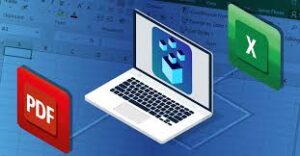Key Takeaways
- Understanding different pricing models for recruitment software.
- Identifying your organization’s needs and budget constraints.
- Weighing the pros and cons of popular recruitment software solutions.
- Utilizing external research and data to inform your decision.
Introduction to Recruitment Software Pricing
In today’s competitive job market, recruitment software has become an essential tool for businesses of all sizes. However, understanding the various recruitment software pricing models and determining which one fits your organization’s needs can be challenging. This article delves into the different aspects of recruitment software pricing, providing valuable insights to help you make a well-informed decision.
Whether you’re a growing startup or a well-established corporation, the right recruitment software can streamline your hiring process, saving you time and resources. Recruitment processes have evolved significantly over the past decade, and leveraging technology has proven to be a game-changer. With numerous options available in the market, understanding the nuances of different pricing models and how they align with your organizational goals is crucial for making the most of your investment.
Different Pricing Models Explained
Recruitment software offers various pricing models to suit different organizational needs. Subscription-based pricing is a recurring fee that provides ongoing support and updates, ideal for businesses that require constant innovation. One-time licensing fees offer lifetime access to the software, which is ideal for those who prefer a one-time investment without ongoing costs. However, it’s crucial to consider whether the software will keep up with industry advancements without additional expenses for updates or upgrades. Pay-per-use pricing is based on usage, which is ideal for smaller businesses or those with fluctuating recruitment needs. This model provides flexibility and ensures that only the features and services are used, making it a practical choice for organizations with variable hiring volumes.
Assessing Your Organization’s Needs
Examining your unique needs is essential before selecting a pricing plan. Take into account variables such as the number of hires, the size of your recruitment team, and your overall budget. One of the most critical metrics for most firms is time-to-hire, which may be significantly decreased with an effective recruitment process. Having a clear idea of what you need can help you select the most cost-effective option. There is more to evaluating your organization’s needs than merely looking at the numbers. Look into your present recruitment obstacles and identify how a software solution might handle these issues. What do you prioritize—time-saving features, user-friendly interfaces, or rich analytics? By being aware of your requirements, you may avoid wasting money on things that won’t improve the hiring process. Through the identification of key performance indicators (KPIs) like s time-to-hire, cost-per-hire, and application completion rates, you can align your software choice with your strategic goals.
Analyzing Popular Recruitment Software Solutions
Examining well-known recruiting software options is the next step after you have a firm grasp of your needs. Every platform has different features and price ranges. For example, some platforms might concentrate on user-friendly interfaces and smooth integrations, while others might offer powerful analytics and automation features. It’s critical to evaluate the features of several software packages to choose which best fits your hiring approach.
Take case studies, expert assessments, and peer reviews into account while evaluating software solutions. You can try out the platform before committing with the help of trial versions or demos that many software suppliers offer. Involve your hiring team in the assessment procedure to make sure the selected software satisfies their regular operating requirements and boosts productivity. The perfect program should not just fulfill the needs of the current.
Pros and Cons of Subscription-Based Models
Subscription-based pricing models are popular due to their flexibility and continuous support. However, they may not always be the most cost-effective option in the long run. A detailed analysis by the Society for Human Resource Management suggests that monthly or annual fees could accumulate over time, making it essential to weigh the long-term costs against the benefits. While you gain access to the latest features and improvements, consider if the ongoing costs align with your budget and needs.
The subscription model’s advantage lies in its adaptability. Software providers regularly update their platforms, incorporating new features, fixing bugs, and ensuring compliance with evolving industry standards. This ongoing enhancement can significantly benefit organizations that operate in dynamic environments. On the downside, the recurring fees can become onerous, especially for smaller firms. It’s essential to evaluate whether continuous access to cutting-edge functionalities justifies the cumulative expense over several years.
Calculating Total Cost of Ownership (TCO)
The total cost of ownership should be taken into account when selecting recruiting software (TCO). TCO encompasses not just the subscription or licensing fees but also the expenses for things like maintenance, training, and implementation. You may avoid budget oversights and make sure you’re making a financially sensible option by having a thorough understanding of TCO. To obtain a realistic understanding of your investment and its long-term implications, compute all possible costs.
Depending on the software’s complexity and the level of setup skill needed, implementation costs might vary significantly. Team training sessions are essential to optimizing the software’s benefits but also add to the initial cost. Maintenance and customer support are examples of continuous costs that are frequently disregarded when creating a budget. To prevent unforeseen financial hardship, list all potential expenses and
Factors Affecting Pricing
Several factors can affect the pricing of recruitment software, including:
- Feature Set: Advanced features like AI-driven insights or multi-platform integrations can drive up costs. More comprehensive solutions with sophisticated capabilities tend to be more expensive due to the added value they provide.
- Scalability: Solutions that scale with your business needs tend to be more expensive. Scalable solutions are designed to grow with your company, ensuring that the software can handle increased usage without a drop in performance or efficiency.
- Customer Support: Personalized customer support and dedicated account managers often come at a premium. High-quality support ensures that any issues are promptly addressed, minimizing downtime and enhancing user experience.
Understanding these factors can help you find a solution that offers the necessary functionalities without exceeding your budget. Always prioritize the features that are most critical to your recruitment processes. For instance, if integrating with other HR systems is a top priority, focus on solutions that offer seamless compatibility. Customizable features and user-specific dashboards can also enhance efficiency by tailoring the software to your unique requirements.
Making the Right Choice
Ultimately, the right recruitment software for your organization will depend on a careful balance of features, pricing, and your specific needs. Doing thorough research, leveraging external resources, and considering long-term implications are critical steps in making an informed choice. By understanding the intricacies of different pricing models and evaluating your organizational requirements, you can select recruitment software that enhances your hiring process and fits your budget.
Investing in the right recruitment software is a strategic decision that can yield significant returns in efficiency and talent acquisition. Informed choices backed by thorough research and a clear understanding of your organization’s needs ensure that the software not only fulfills current demands but also supports future growth. The objective is to integrate a solution that streamlines your recruitment pipeline, improves candidate experience, and ultimately contributes to your company’s success.






